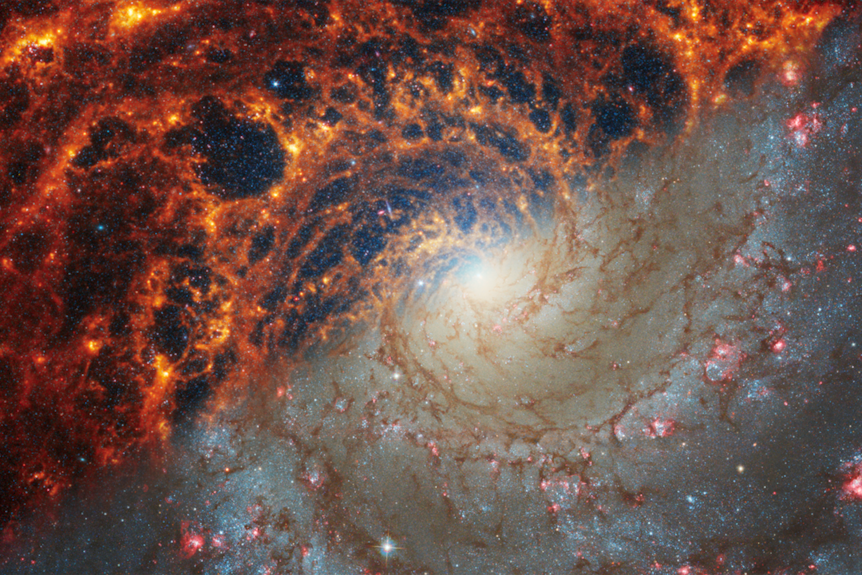We’ve just been given another series of striking images from the James Webb Space Telescope (JWST).
Its latest offering is new imagery of 19 spiral galaxies, captured in “mind-blowing” new detail.
To show off just how impressive this is, the US National Aeronautics and Space Administration (NASA) has published them alongside older versions taken by the Hubble Space Telescope.
Here’s a few of them:
Comparing new images to old ones
Why the difference?
Because the JWST is more powerful than Hubble.
Its larger primary mirror has six times the light-gathering power of Hubble’s primary mirror.
And with its Near-Infrared Camera (NIRCam) and Mid-Infrared Instrument (MIRI), it has deeper infrared vision than Hubble.
But that’s not a slight on Hubble, which was launched in 1990 and designed to capture ultraviolet and visible light.
JWST, by comparison, was launched in 2021 — so its technology is much more advanced.
“Using Hubble, we would see the starlight from galaxies, but some of the light was blocked by the dust of galaxies,” University of Alberta astronomer Erik Rosolowsky said.
“With Webb’s view in the infrared, we can see through this dust to see stars behind and within the enshrouding dust.”
What do these images show?
Notice how we’re using the word “image” instead of “photo”?
That’s because they’re not like the photos you take on your phone.
The telescope picks up what’s invisible to the human eye and, back on Earth, scientists assign colours to those data points to visualise them, creating what’s called a ‘representative colour image’.
Let’s focus on this image, which is a face-on view of spiral galaxy CNG 628:
It’s a very wide shot encapsulating a whole lot of stars and space dust in great detail.
But it wasn’t beamed back to Earth looking like that — the colours were added by scientists, who assigned a colour to each filter they used.
All those tiny pinpoints of light blue in the centre of the picture are older stars.
The orange and red bits are visualisations of gas and dust.
And what about those dark gaps between the spirals?
Adam Leroy, an astronomy professor at the Ohio State University reckons they could have been created by the impact of one or more stars exploding.
“[They could have] carved out giant holes in the interstellar material,” he said in a NASA press release.
The closest of the 19 galaxies in NASA’s latest collection is called NGC 5068, which is about 15 million light years from Earth.
The most distant one — NGC1365 — is about 60 million light years from Earth.
Is the telescope just making pretty pictures?
No.
The data collected from the telescope offers new clues on star formation as well as galactic structure and evolution.
“Webb’s new images are extraordinary,” the Space Telescope Science Institute’s Janice Lee said in a NASA press release.
“They’re mind-blowing even for researchers who have studied these same galaxies for decades.
“Bubbles and filaments are resolved down to the smallest scales ever observed, and tell a story about the star formation cycle.”
Dr Leroy said it was an exciting stepping-stone for galaxy research.
“Stars can live for billions or trillions of years,” he said.
“By precisely cataloguing all types of stars, we can build a more reliable, holistic view of their life cycles.”
ABC with Wires
